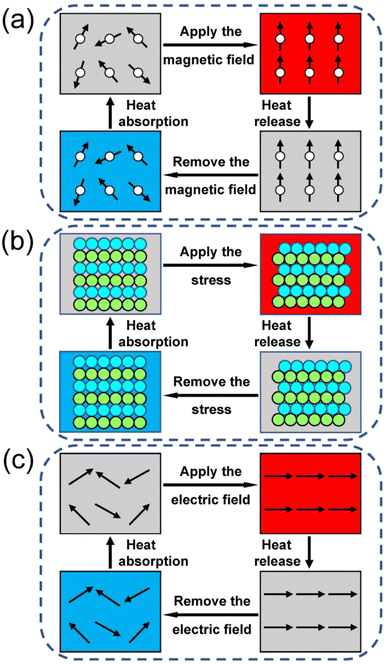 Open Access Article
Open Access ArticleCreative Commons Attribution 3.0 Unported Licence
Correction: Solid-state cooling: thermoelectrics
Yongxin
Qin
 a,
Bingchao
Qin
a,
Bingchao
Qin
 *a,
Dongyang
Wang
*a,
Dongyang
Wang
 a,
Cheng
Chang
a,
Cheng
Chang
 b and
Li-Dong
Zhao
b and
Li-Dong
Zhao
 *ac
*ac
aSchool of Materials Science and Engineering, Beihang University, Beijing 100191, China. E-mail: qinbingchao@buaa.edu.cn; zhaolidong@buaa.edu.cn
bInstitute of Science and Technology Austria, Am Campus 1, 3400, Klosterneuburg, Austria
cKey Laboratory of Intelligent Sensing Materials and Chip Integration Technology of Zhejiang Province, Hang zhou, 310051, China
First published on 23rd November 2023
Abstract
Correction for ‘Solid-state cooling: thermoelectrics’ by Yongxin Qin et al., Energy Environ. Sci., 2022, 15, 4527–4541, https://doi.org/10.1039/D2EE02408J.
In Fig. 1 on page 4528 of this article, to describe the operating principle and process of the solid-state refrigeration technologies in more detail and accurately, the original figure should be replaced with an updated one. The corresponding caption of Fig. 1 should also be updated. Note that this correction does not have any impact on the main idea and conclusion of this article. The updated Fig. 1 should appear as follows.
The Royal Society of Chemistry apologises for these errors and any consequent inconvenience to authors and readers.
| This journal is © The Royal Society of Chemistry 2023 |

